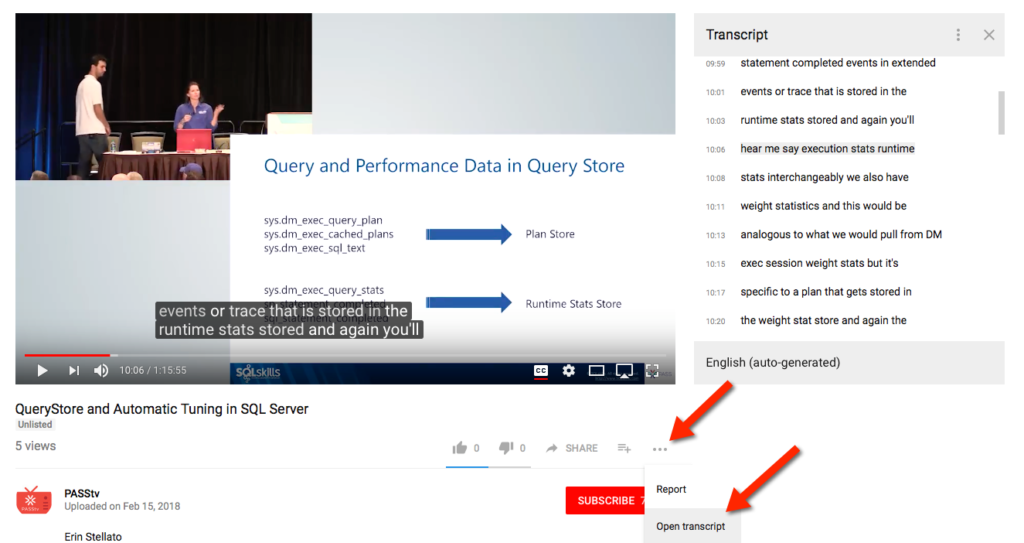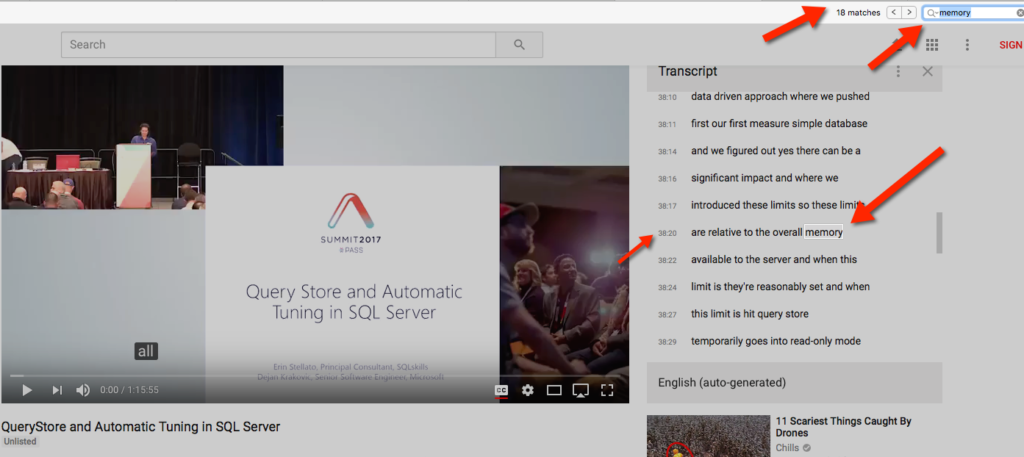How to Filter RPC_Completed Events in Extended Events: SQL Server Guide
The rpc_completed event in Extended Events is useful when troubleshooting SQL Server performance. It captures detailed information about Remote …
This week, I was pretty pumped to see that PASS published Erin Stellato (twitter) and Dejan Krakovic’s (linked in) excellent session on Query Store to the public.
I attended this session live at the conference, and I remembered that there was one specific part on memory limits in Query Store that I wanted to watch again. I’d jotted down a note about it, but things were flying by and my note was gibberish.
The recording is 75 minutes long, and it’s a great session, but I wanted to just find this one part at the moment. However, I couldn’t remember if the comment was early or late in the session.
Transcripts are kinda hard to see in YouTube, and I only discovered them when I was playing around with YouTube in the process of captioning my own videos.
To open transcripts, I had to click on the ‘…’ in my browser, then select open Transcript. That gets it open in a pane of its own:

If you’re on mobile, you may well get a different UI experience and have to tap elsewhere. My general practice is just to rub my forehead against the phone until it works.
The transcript for YouTube videos is generally automatically generated, so you may need a little creativity or luck here.
I knew I wanted to find a reference to ‘memory’, and it seemed like a good word to search on because it doesn’t have a lot of homonyms. I guess it could be auto-transcribed as ‘mammary’, which would be hilarious, but in this case the computers got it right.
The whole transcript loaded in the page for me, so I found all 18 memory occurrences, and was able to page through them.

The timestamps helpfully showed that the portion of the video I wanted to watch is around 37 minutes in, and I was able to go straight there.
There is a question from the audience about the performance impact of running Query Store.
Dejan gives an answer that points out that the overhead is often minimal, but you may run into special situations if you have a workload that generates a lot of unique query plans (such as a non-parameterized workload). I won’t spoil it, watch it for more info – for the portion on the safety memory limit, watch until 38:42.
I loved the session live, and it’s great to have it online to reference and share with others.
You can watch even more free videos from the PASS Summit 2018 right here.
Copyright (c) 2025, Catalyze SQL, LLC; all rights reserved. Opinions expressed on this site are solely those of Kendra Little of Catalyze SQL, LLC. Content policy: Short excerpts of blog posts (3 sentences) may be republished, but longer excerpts and artwork cannot be shared without explicit permission.